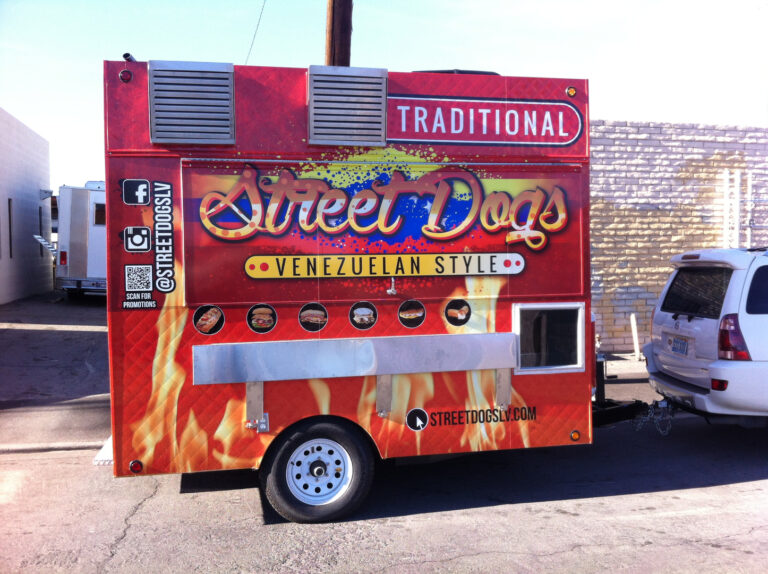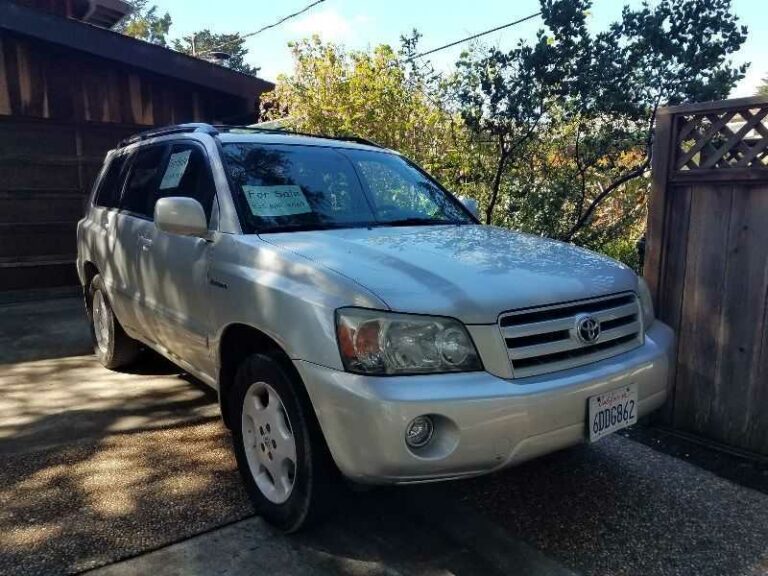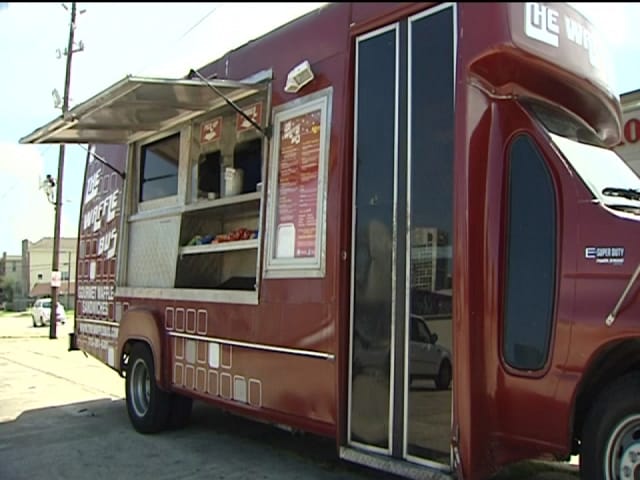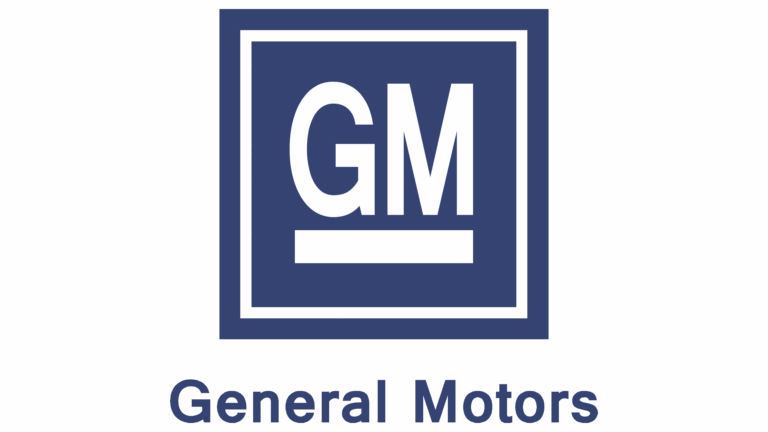Classic Dodge Trucks For Sale: A Comprehensive Buyer’s Guide
Classic Dodge Trucks For Sale: A Comprehensive Buyer’s Guide cars.truckstrend.com
Introduction: The Enduring Allure of Vintage Power
In an automotive landscape dominated by sleek, digitalized machines, there’s a profound, undeniable charm in the raw, unadulterated character of a classic pickup truck. Among the titans of American manufacturing, Dodge has carved out a unique and storied legacy, producing trucks renowned for their rugged durability, distinctive styling, and unwavering workhorse ethic. For enthusiasts and collectors alike, the phrase "Classic Dodge Trucks For Sale" isn’t just a search query; it’s an invitation to step back in time, to own a piece of automotive history, and to embrace a vehicle that truly stands apart.
Classic Dodge Trucks For Sale: A Comprehensive Buyer’s Guide
From the formidable Power Wagons that conquered post-war landscapes to the stylish Sweptlines and the iconic D-Series, classic Dodge trucks represent an era of robust engineering and purposeful design. They embody a spirit of resilience, a testament to American craftsmanship, and a canvas for personal expression. Whether you’re seeking a nostalgic daily driver, a challenging restoration project, a show-stopping custom, or a valuable investment, the market for classic Dodge trucks offers a wealth of opportunities. This comprehensive guide aims to equip you with the knowledge and insights needed to navigate this exciting world, helping you find and secure your dream classic Mopar workhorse.
The Enduring Legacy of Dodge Trucks
Dodge’s journey in truck manufacturing began in the early 20th century, quickly establishing a reputation for building tough, dependable vehicles. While often overshadowed by Ford and Chevrolet in sheer production numbers, Dodge trucks consistently offered unique features, robust powertrains, and a distinctive aesthetic that garnered a loyal following.
Key periods in Dodge’s truck history that resonate with classic enthusiasts include:
- Pre-War and Early Post-War Era (e.g., WC Series, Power Wagon): These trucks, particularly the civilian Power Wagon introduced in 1946, were direct descendants of military vehicles, renowned for their incredible off-road capability and utilitarian design. They set the standard for heavy-duty 4x4s.
- 1950s (e.g., C-Series, Sweptline): The "Sweptline" design, introduced in 1957, marked a significant stylistic departure, offering a smooth, integrated bed and cab design that contrasted with the step-side alternatives. These trucks often featured powerful V8 engines and a more comfortable ride, signaling a shift towards personal use in addition to work.
- 1960s (e.g., D-Series, A100): The D-Series (D100, D200, etc.) became the backbone of Dodge’s light-duty truck lineup. Known for their sturdy construction and available "Slant Six" or V8 engines, they were versatile workhorses. The compact, cab-over A100 pickup and van also emerged, offering a unique, counter-culture aesthetic.
- 1970s (e.g., "The Club Cab," Warlock, Lil’ Red Express): Dodge continued to innovate with features like the first extended "Club Cab" in 1973. The decade also saw the introduction of limited-edition, performance-oriented trucks like the Warlock and the iconic Lil’ Red Express, making Dodge a player in the burgeoning muscle truck scene.

This rich history means that when you’re looking for classic Dodge trucks for sale, you’re not just buying a vehicle; you’re acquiring a piece of American industrial heritage.
Defining "Classic": Which Dodge Trucks Qualify?
While "classic" can be subjective, generally, it refers to vehicles at least 25 years old that possess historical significance, unique design, or collector appeal. For Dodge trucks, this often encompasses models from the post-war era up to the early 1990s.
- The Icons: The original Power Wagons (1946-1968) are arguably the most sought-after, commanding premium prices due to their legendary ruggedness and historical significance.
- The Stylish: Sweptline pickups (1957-1971 D-Series) are popular for their distinctive, integrated body lines and are often chosen for restorations or restomods.
- The Compact & Quirky: The A100 (1964-1970), with its cab-over design, has gained significant popularity in recent years, especially among customizers and those seeking a unique vintage hauler.
- The Workhorses: Later D-Series trucks (1972-1993, which transitioned to Ram in 1981) offer a more accessible entry point into classic ownership. The "First Gen" Rams, particularly those with the legendary Cummins diesel engine (introduced in 1989), are highly desirable for their durability and performance.
Understanding these categories helps narrow your search and provides context for pricing and availability when exploring classic Dodge trucks for sale.
Why Invest in a Classic Dodge Truck? Benefits and Appeal
The decision to purchase a classic Dodge truck goes beyond mere transportation; it’s an investment in a lifestyle and a tangible piece of history.
- Unique Style & Character: In a sea of identical modern vehicles, a classic Dodge truck stands out. Its vintage lines, chrome accents, and distinct grille designs evoke a sense of nostalgia and individuality.
- Robust Engineering: These trucks were built to last. Their simpler mechanical systems are often easier to diagnose and repair than modern, computer-controlled vehicles.
- Investment Potential: While not all classic vehicles appreciate, well-maintained, rare, or professionally restored classic Dodge trucks can be excellent investments, with values often increasing over time.
- Customization Canvas: From full, period-correct restorations to modern "restomods" (classic body with modern drivetrain, suspension, and amenities), these trucks offer endless possibilities for personalization.
- Community & Hobby: Owning a classic truck connects you to a vibrant community of enthusiasts, offering opportunities for car shows, cruises, and shared knowledge.
- The Driving Experience: There’s a raw, engaging satisfaction in driving a classic truck – the feel of the road, the rumble of a V8, and the direct connection to the machinery.
Navigating the Market: Where to Find Your Dream Dodge
Finding the right classic Dodge truck for sale requires a strategic approach. Here are the most common avenues:
- Online Marketplaces:
- Specialized Classic Car Sites: Hemmings, ClassicCars.com, Bring a Trailer (for higher-end or unique finds), and AutoTrader Classics are excellent resources.
- General Classifieds: eBay Motors, Craigslist, and Facebook Marketplace can yield hidden gems, but require careful vetting.
- Forums & Clubs: Many model-specific online forums and enthusiast clubs have "for sale" sections where passionate owners list their trucks.
- Specialized Classic Truck Dealers: These dealerships focus exclusively on vintage vehicles, often offering thoroughly inspected and sometimes restored trucks. They may come with a higher price tag but offer peace of mind.
- Auctions: Live auctions (Mecum, Barrett-Jackson) and online auction platforms can be exciting places to buy, but require quick decision-making and a clear understanding of buyer’s premiums.
- Local Listings & Word of Mouth: Check local classifieds, attend car shows, and network with local classic car clubs. Sometimes, the best finds are discovered through personal connections.
Practical Advice: Set a clear budget (including potential restoration costs), define your desired model and condition, and be patient. The right truck will come along.
What to Look For: Essential Inspection Checklist
When you find a classic Dodge truck for sale that piques your interest, a thorough inspection is paramount. Don’t let emotion override logic.
- Rust: This is the #1 enemy. Check the frame, cab corners, rocker panels, floorboards, bed, fender wells, and around windows. Surface rust is manageable, but structural rust can be a deal-breaker or a very expensive repair.
- Engine & Drivetrain:
- Check for leaks (oil, coolant, transmission fluid).
- Listen for unusual noises (knocking, ticking, grinding).
- Check exhaust smoke color (blue for oil, white for coolant, black for rich fuel).
- Test drive: Check shifting (automatic and manual), clutch engagement, and acceleration.
- Brakes & Steering:
- Test brake pedal feel (firmness, pull to one side).
- Check for excessive play in the steering wheel.
- Inspect suspension components (shocks, leaf springs, bushings).
- Electrical System: Test all lights, gauges, wipers, heater fan, and radio. Look for frayed wires or amateur wiring jobs.
- Interior: Assess the condition of the seats, dashboard, door panels, and headliner. Look for signs of water leaks or rodent damage.
- Documentation: Request the title (ensure it matches the VIN), service records, and any ownership history. A well-documented truck is often a well-cared-for truck.
- Professional Inspection: For any significant purchase, hire a qualified mechanic specializing in classic vehicles to perform a pre-purchase inspection. This small investment can save you thousands.
Understanding Condition & Value: A Buyer’s Guide
The price of classic Dodge trucks for sale varies dramatically based on condition. Understanding these categories is crucial for setting realistic expectations and budgets.
- Concours/Show Quality (Condition #1): Flawless, museum-grade. Every detail is perfect, often exceeding factory standards. Highest price point.
- Excellent/Driver Quality (Condition #2): Very good condition, minimal flaws, reliable driver. May have minor imperfections but is highly presentable and functional. Strong price.
- Good/Project Quality (Condition #3): Needs work (cosmetic, mechanical, or both) but is drivable or easily made so. Good for a rolling restoration or a solid custom base. Moderate price.
- Fair/Parts Truck (Condition #4/5): Significant work needed, potentially non-running, or heavily rusted. Suitable for parts or a full, frame-off restoration by an experienced individual. Lowest price.
Pricing Factors: Beyond condition, rarity, specific model year, engine/transmission combination (e.g., a Power Wagon with a rare PTO winch, or a First Gen Ram with a Cummins diesel), 4×4 vs. 2WD, originality, documented history, and current market demand all influence the final price.
Restoration vs. Preservation vs. Customization
Once you own a classic Dodge truck, you have choices for its future:
- Full Restoration: Aiming to bring the truck back to its factory-original condition, often involving disassembling it down to the frame. This is the most expensive and time-consuming option, requiring specialized skills and parts.
- Preservation (Survivor): Focusing on maintaining the truck’s originality and patina while ensuring mechanical reliability. This often involves cleaning, minor repairs, and clear-coating original paint. "Survivor" trucks are increasingly valued for their authentic character.
- Restomod/Customization: Blending classic aesthetics with modern performance and comfort. This could involve engine swaps (e.g., a modern Hemi), upgraded suspension, disc brakes, air conditioning, and contemporary interiors. This offers the best of both worlds: classic looks with modern driveability.
Challenges & Solutions: Finding specific parts, especially for older or rarer models, can be challenging. Join online forums, network with other owners, and explore reproduction parts suppliers. Budget overruns are common in restoration projects, so always factor in a contingency fund.
Classic Dodge Trucks For Sale: Estimated Price Guide
Please note that these are highly generalized estimates. The actual price of a classic Dodge truck can vary wildly based on its specific year, model, engine, transmission, options, overall condition, originality, provenance, geographic location, and current market demand. Rare models, trucks with desirable factory options (e.g., specific engines, 4×4), or those with documented histories and low mileage will command premium prices. Always conduct thorough research and consider a professional appraisal.
| Model/Year Range | Typical Condition (Description) | Estimated Price Range (USD) | Key Features/Notes |
|---|---|---|---|
| Dodge Power Wagon (Pre-1971) | Project/Barn Find | $5,000 – $25,000 | Early 4×4, military heritage, rugged utility. Often needs extensive restoration. |
| Driver Quality/Solid | $25,000 – $60,000 | Mechanically sound, minor cosmetic flaws. Functional and presentable. | |
| Fully Restored/Custom Restomod | $60,000 – $150,000+ | Show quality, modern powertrain upgrades (e.g., Cummins swaps), highly sought-after. | |
| Dodge Sweptline (C-Series/D-Series 1957-1971) | Project/Rust Bucket | $2,000 – $10,000 | Good for parts or full frame-off. Significant bodywork likely needed. |
| Driver Quality | $10,000 – $30,000 | Functional, presentable, may need some mechanical or cosmetic attention. Often V8s. | |
| Fully Restored/High-End Driver | $30,000 – $70,000 | Excellent condition, show-ready, often with period-correct or mild upgrades. | |
| Dodge A100 (Pickup/Van 1964-1970) | Project/Needs Major Work | $3,000 – $15,000 | Unique cab-over design, compact. Often requires rust repair and mechanical overhaul. |
| Driver Quality | $15,000 – $35,000 | Fun cruiser, some cosmetic issues. Good for light customization. | |
| Restored/Customized | $35,000 – $70,000+ | Often with modern engine swaps, vibrant paint, popular with surf/retro culture. | |
| Dodge D-Series (1972-1980 – "Third Gen") | Project/Daily Driver (Rough) | $1,500 – $8,000 | More common, good entry point for a budget project. |
| Solid Driver/Minor Restoration Needed | $8,000 – $25,000 | Reliable, good for daily use or mild custom. Warlock/Lil’ Red Express in rough shape. | |
| Restored/Special Editions (Warlock, Lil’ Red Express) | $25,000 – $60,000+ | Rare, performance-oriented models command higher prices, especially restored examples. | |
| Dodge Ram (First Gen 1981-1993, esp. W150/W250) | Project/Work Truck | $1,000 – $7,000 | Durable, often with high mileage. Cummins diesel models (1989-93) start higher. |
| Solid Driver/Well-Maintained | $7,000 – $20,000 | Sought after for utility and diesel power. Diesel versions typically higher end. | |
| Restored/Low Mileage Cummins | $20,000 – $45,000+ | Pristine condition, highly desirable for their legendary Cummins reliability and power. |
Frequently Asked Questions (FAQ) about Classic Dodge Trucks For Sale
Q: What makes a Dodge truck "classic"?
A: Generally, a classic vehicle is considered to be 25 years or older. For Dodge trucks, this typically includes models from the Power Wagon era up to the early 1990s, valued for their distinctive styling, robust engineering, and historical significance.
Q: Are classic Dodge trucks reliable for daily driving?
A: Many classic Dodge trucks can be reliable daily drivers if they are well-maintained or have undergone a mechanical refresh. However, they lack modern safety features, fuel economy, and comfort. A "restomod" with modern mechanicals is often the best option for regular use.
Q: Is it hard to find parts for classic Dodge trucks?
A: It depends on the specific model and year. Common mechanical parts for popular models (like the D-Series) are often available through aftermarket suppliers. However, specific trim pieces, body panels, or unique components for rarer models (like Power Wagons or A100s) can be challenging to source, sometimes requiring custom fabrication or diligent searching in salvage yards.
Q: How much does it cost to restore a classic Dodge truck?
A: Restoration costs vary immensely. A full, professional, frame-off restoration can easily range from $50,000 to over $100,000, often exceeding the truck’s market value. A DIY mechanical restoration might be a few thousand, while a full cosmetic and mechanical refresh could be $15,000-$30,000+.
Q: Are classic Dodge trucks a good investment?
A: Potentially. Rare models, trucks with desirable factory options, or those in exceptional, original condition or professionally restored often appreciate in value. However, like any investment, it’s not guaranteed. It’s best to buy a classic truck primarily for passion and enjoyment, with potential appreciation as a secondary benefit.
Q: What’s the difference between a D-Series and a Power Wagon?
A: The Power Wagon was originally a specific line of heavy-duty, military-derived 4×4 trucks (e.g., WM300, WDX) known for their extreme utility. The D-Series refers to Dodge’s main line of light-duty and medium-duty trucks (D100, D200, D300, etc.), which were primarily 2WD. However, D-Series trucks also had 4×4 variants, which were typically designated with a "W" prefix (e.g., W100, W200), essentially making them D-Series 4x4s. Later, the "Power Wagon" name was used as a trim level on D-Series 4x4s.
Conclusion: Driving a Legend
The journey of acquiring a classic Dodge truck is more than a transaction; it’s an embarkation on a passion project, a dive into automotive history, and an entry into a vibrant community. These trucks, with their no-nonsense charm and enduring reliability, offer a tangible connection to an era when vehicles were built to last, designed with character, and revered for their utility.
Whether you’re drawn to the unstoppable might of a Power Wagon, the sleek lines of a Sweptline, or the raw power of a First Gen Ram, the market for classic Dodge trucks for sale holds a treasure trove of possibilities. With careful research, a thorough inspection, and a clear vision for its future, you can find the perfect Mopar classic to call your own. Owning one isn’t just about driving; it’s about experiencing a legend, one mile at a time.




